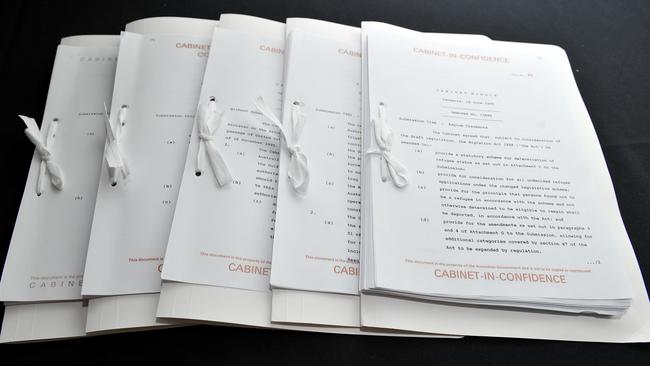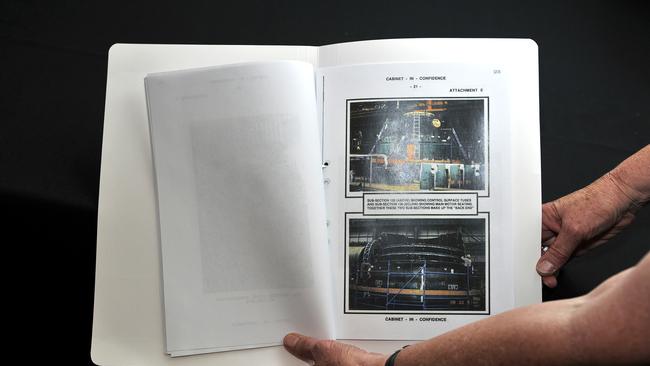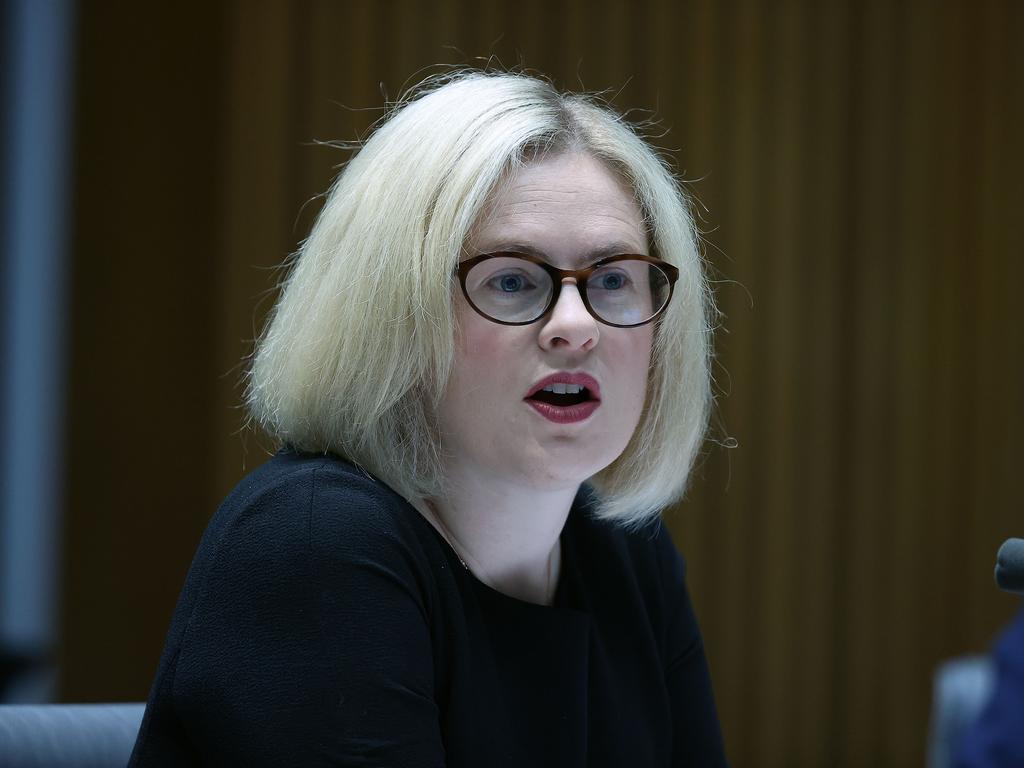Archival incompetence a ‘weapon’ of government
Bureaucrats run interference to make sure even the most innocuous documents remain secret.

Last week, Dirk Moses, a distinguished scholar in the study of global genocide, received an email from the National Archives of Australia about information he had requested concerning Australian aid to the Congo during the war between Nigeria and Biafra of the late 1960s. He would in due course be receiving some files, subject to unspecified but probably copious redactions.
Brisbane-born Moses, now at University of North Carolina, recognised the bureaucratic boilerplate he had received many times before: “The public disclosure of this information could compromise the future activities of Australian intelligence agencies and impair their ability to carry out their statutory functions. It would therefore reasonably be expected to cause damage to the defence and security of the Commonwealth.”
Moses permitted himself a rueful smile. He had made the application six years earlier, and published the book for which he had made the inquiry in 2018. Meanwhile, somewhere, a modern day Tite Barnacle was going home with a sense of a job well done.
National archives have been uncharacteristically newsworthy in the last month, after a review of their functions by public servant David Tune, grudgingly divulged by the Morrison government 15 months after its submission, laid bare the worsening degradation of its great collection, thanks to a decade’s mismanagement, neglect and false economy.
The NAA’s own advisory council urged Tune that “successive efficiency dividends and savings measures imposed upon the National Archives have substantially diminished its capacity to perform its functions and deliver services to government and the Australian public” – even if that same council has been ineffective as a public advocate for the institution.
But there is another under-reported aspect of its decline, confirmed by submission after submission to the Tune review, which is the worsening accessibility of Australian public records – something in keeping with a government growingly obsessed with secrecy.
Ten years ago, NAA could have been considered near the forefront of a global movement for greater government transparency and accountability. As Kevin Rudd’s special minister of state, Senator John Faulkner cajoled parliamentary colleagues into progressively reducing the waiting time for the opening of documents by a decade – meaning, notably, that cabinet papers would become available after 20 years rather than 30.
But not everything is a cabinet paper. The vast majority of documents in NAA have never been looked at. After 20 years, they are “open” only in principle. When requested, via an absurdly convoluted online form that almost seems designed to court error, files are sent for “access examination” to the originating agency, generally a government department. In theory, review is meant to take 90 days. In practice, even the most innocuous files commonly take years.

Using the same kind of doublespeak as gave the NAA “efficiency dividends”, director-general David Fricker calls his a “pro-disclosure” organisation – ironic given the eight years and $2m wasted trying to keep the Palace Letters under lock and key in Emeritus Professor Jenny Hocking’s High Court action.
In a recent speech to Sydney’s Women’s Club, Sydney University’s Professor Anne Twomey, one of the first scholars to seek the Palace Letters, laid the issue out as succinctly as anyone: “Delay is not just a consequence of a lack of funding, incompetence or poor management. It is also a weapon. It deters and delays the discovery of documents embarrassing to governments. It relies on people giving up, or having lost the occasion to use the documents – because the relevant project is finished.”
The obvious solution to the bureaucratic push-me-pull-you of “access examination” would be to require agencies to declassify records before depositing them, or to specify in advance a closed period, or to give said agencies 90 days to raise an objection rather than an unlimited amount of time to confect one.
Too obvious? Possibly. In the event, observed Twomey, the problem worsened every year, due to “an increasing paranoia, in the public service and the NAA”.
Departments, especially Foreign Affairs and Trade, seemed to say no reflexively; the NAA, timid and demoralised, fell in with them “no matter how absurd the Department’s advice”. The ombudsman was powerless. Recourse to the Administrative Appeals Tribunal was prohibitively expensive.
To Tune, Twomey had already recounted a series of her own horror stories. These included being commissioned by the Commonwealth Parliamentary Library to write a paper about section 44 of the Constitution during the parliamentary eligibility crisis two years ago.
NAA refused Twomey’s applications to look at legal advices concerning section 44 between the 1950s and 1980s because of “ongoing sensitivities” around privileged materials.

“It didn’t seem to matter,” recalled Twomey, “that the relevant parties were dead, the relevant offices no longer existed, no proceedings could now be brought with respect to the matters concerned and the legal professional privilege no longer had any application or utility.”
Remember that the NAA’s functions under 1983’s Archives Act aren’t just a matter of storage. They include “to encourage, facilitate, publicise and sponsor the use of archival material” and “to make Commonwealth records available for public access”. Submissions to the Tune review cast considerable doubt on whether NAA is capable of complying with them, with disturbing implications for the chronicling of Australia.
The Australian Historical Association observed, for example, that it was now easier for postgraduate students to tackle topics in the US “as they can guarantee access to records and complete their theses and research in a timely manner”.
Couple this with the news that the NAA, as a further cost-saving measure, is embarked on a process of a further consolidation of record-keeping, reeling in records in its state offices.
NAA holds records of the history of each state in nine leased premises across Australia. Of the country’s 26 leading collecting institutions, it is thereby the most demonstrably and functionally national. Last week, however, at a town hall, Fricker foreshadowed greater reliance on “centralised repositories” as leases expired. Some consolidation of records has already, stealthily, occurred. West Australian researchers were bemused a couple of years ago to find that 6km of the state’s repatriation records had, without consultation, been spirited east.
The problem is that because such a small proportion of the national collection has been digitised, and because almost two-thirds has not even been described to the NAA database, consolidation renders records inaccessible to those to whom they are most relevant.
The transformation of state offices into effectively “libraries without books”, meanwhile, also appears to prelude further redundancies at an organisation that has already shed more than a quarter of its staff in the last decade, with a concomitant loss of experience and expertise.
So this concerns more than PhDs that have had to be abandoned and grants from the Australian Research Council that could not be acquitted because of NAA’s inability to perform its core functions in a timely fashion.
It is also of a piece with a government and a bureaucracy for whom “transparency”, “accountability” and even just “accessibility” are becoming just words – also evident recently in legally dubious attempts to wall off national cabinet from scrutiny by deeming it a full-fledged cabinet. And it’s arguable that the costs of secrecy are greater than those of openness.





To join the conversation, please log in. Don't have an account? Register
Join the conversation, you are commenting as Logout